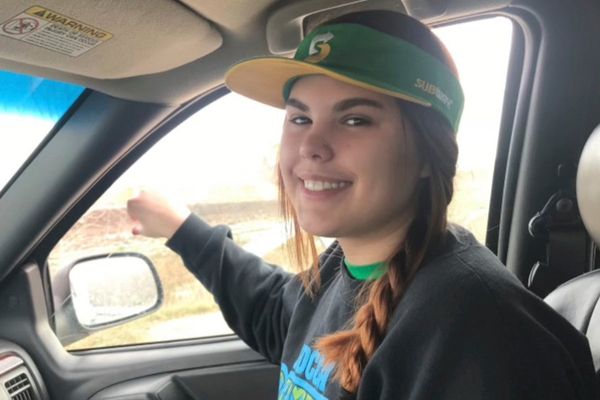

Australia has no shortage of content creators, with roughly six million of us (and growing) creating digital content. It’s no wonder, then, that new products are popping up every day to serve this growing market. The latest? Nikon’s new $2,279 Z50 Mark II camera (body + NIKKOR 18-140mm f/3.5-6.3 lens), aimed specifically at content creators. But with the camera quality of phones getting better every year, the question has to be asked: do content creators NEED an expensive digital camera? I put the Z50 Mark II to the test.
Full disclosure: while I’m pretty adept at video content creation, I’m a beginner when it comes to the technicalities of a digital camera. Everything you see in this article is with the wheel firmly set to “Auto”.

What Makes The Nikon Z50 Mark II So Special?
The Z50 Mark II camera promises “vlogging-first features” and ability to “elevate your content creation in a big way”, but with a $2,279 price tag, it’s a big investment — particularly as 50 percent of Australia’s six million content creators are struggling to monetise.
The big talking point of the Z50II is its “Product Review Mode”, where you can pop an object into the foreground and it’ll autofocus with ease. The Z50II is equipped with the EXPEED 7 imagine-processing engine, the same as the Nikon Z9 (the Z50II’s $9000 counterpart), which means the camera can identify subjects in the frame and quickly adapt the settings accordingly to provide the most ideal image. So instead of placing your hand behind an object you’re trying to get your phone to autofocus on, the Z50II does it instantaneously.
There are also a few quality-of-life features such as a video self-timer, a designated button for colour presets and the camera also serving as a webcam for online meetings and/or live video. Canon will have you download their webcam software and then pay for the pro version just so you can have 1080p, the Z50II ain’t about that.
What’re The Benefits?
Content elevation.
The Z50II will do great for content creators specialising in storytime, cooking, streaming — pretty much any genre of video that has the camera sat on a tripod. We filmed our first episode of Married At First Sight versus PEDESTRIAN.TV with the Z50II then the second episode on my iPhone 15 Pro and you can see the difference in the image below:

Off the bat you can see the Z50II’s image has better contrast and crispier detail. The Z50II also interacted better with the studio lighting compared to the iPhone and it’s that subtle visual pizzazz that makes audiences think “Oh yeah, they’re professionals. They know how to make content.”
Flip screen = W.
For any narcissist who likes to look at themselves while recording, you’re familiar with the sacrifice of flipping your phone to the front-facing camera so you can look at the frame but ultimately minimising the quality of video.
The flip screen is an underrated advantage of having a digital camera for content creation; you get the best of both worlds in seeing what you’re recording while also maintaining the best video quality. However, a pet peeve I have with the Z50II was I couldn’t access my gallery while the screen was flipped, so don’t place your tripod too close to the wall if you wanna review footage while recording.

It sees what I see.
Really vague subheading, let me explain. So I’m not a tripod content creator, I’m all about romanticising life which means I’m out and about travel vlogging. Carrying my Z50II through Sydney, I made a cute lil wrap up of my week, which will help you get an idea of what quality is coming out:
Phil Lober – Almost Alive (Intro)
(Once again hammering down, I am a beginner.)
Now on first glance you may be thinking “You can do this with an iPhone video, just increase the contrast and sharpness!” No. It doesn’t work that way.
The Z50II isn’t just good for image quality; I was walking around Hyde Park and the sky was this beautiful lavender colour. I recorded the sky with the Z50II and my iPhone, the former best captured what my eyes were seeing. Even after meddling with the vibrance/warmth, I couldn’t get the lavender sky with the iPhone footage. Now you could say that I’m just not colour grading the video properly — and you’re probably right — but as someone who prefers efficiency, I’d rather not colour grade the video at all.
The zoom is really good.
Shot on the Nikon Z50II.
Notice how after zooming in the ramen made it look even better? That’s the EXPEED 7 imagine-processing engine coming into play, automatically identify subjects in the frame and shifting the focus accordingly, no tapping on the screen needed! This is a huge flex for the Z50II that separates it not just from phone cameras but other digital cameras. It’s features like this that reinforce the idea that Nikon have made the Z50II for content creators. Another example:
Whether you’re zooming or panning, your image quality is still mint. This’ll definitely lend itself to food content, nature-posting or unboxing videos. While you can achieve the same framing with your phone, you definitely won’t be getting the same level of image quality that’ll get audiences to take your content seriously.
It’s also pretty good for photos.
I mainly do videos but I couldn’t help but shoot some photos with the Z50II and giving my mate Timothy a new Hinge profile picture (you are so welcome). There’s a special joy in carrying a camera wherever you go, holding your eye up into the viewfinder and snapping a photo. Not only is the photo inherently better quality but I also feel a lot more “official” taking photos with a digital camera as opposed to my iPhone.

“You can use my photo but you have to link to my Instagram.” – @chpmntim
I think this is an important thing to note because I carried the Z50II with videography intent, but the camera’s capabilities invited me to extend my own capabilities as a content creator (hence the pixelation segment of my vlog). If I wanted to try streaming, I could just plug in the Z50II as my webcam and huzzah. If I wanted to try cinematography, I’ve got the option to film in 4K 60FPS. Sure, I’ve been pumping out some quality stuff while on AUTO mode, but the Z50II packs a lot of features that encourages a beginner like myself to learn and develop my technical camera skills once I’m ready to make that leap.
The Only Reason I wouldn’t Commit To The Z50II
The Z50II hates it when you move while videoing. In my little vlog there’s a clip of me walking through an alleyway to the ramen joint Mensho Tokyo. The clip is very reminiscent of films starring Sylvester Stallone, the way it’s Rocky. Unfortunately that’s because the Z50II lacks in-body image stabilisation, and as someone who likes to mobile while recording this camera just did not do me any favours.
Shot on the Nikon Z50II.
As a travel vlogger, you’d want to make monuments look dynamic or walk and talk with the selfie angle, both of these things the Z50II simply discourages. It solidifies the Z50II as a camera dedicated for content creators who are more stationary, like those aforementioned genres. Can’t win them all ¯\_(ツ)_/¯
You can buy 455 McDonalds Cheeseburgers… or a Nikon Z50II…
$2,279 is a scary number, but it’s only scary if you frame it as “upgrading from a phone camera to a digital camera”. I did sleuth the internet for competing entry-level mirrorless cameras (Canon R10, Fujifilm X-T30 Mark II & Sony ZV-E10 Mark II) and while the Z50II is a few hundred dollars pricier, the internet generally favored the Z50II because it doesn’t just elevate your content, it also offers an elevated threshold for what you’re capable of creating. You don’t buy a Swiss Army Knife just to only use the bottle opener.
It also has the benefit of being a newly released model, so you won’t be due for an upgrade anytime soon. But if I’m being honest, when it comes to content creation (that isn’t traveling) I don’t think you’d need to upgrade at all seeing how the Z50II ticks the boxes.
So is it worth it?
In summary: Your phone simply cannot replicate level of focal control and image quality as a digital camera. If you can ignore (and forgive) the lack of in-built image stabilisation, the Z50II has all your content creation needs taken care of while also enabling you to explore further venues of creativity through its accessibility. The price is a bit AHHHHH but the Z50II is a comfortable digital camera to take to in the long haul of your content creation journey if you feel it’s time to take it seriously. So yes, I’d say it’s worth it.
Where to buy the Nikon Z50II camera
Want to test it for yourself? You can buy the camera at most major camera outlets and tech stores, Big W, where it’s currently retailing for just $1,519.

The post Nikon Z50 II Review: Is The New Digital Camera Aimed At Content Creators Worth $2000? appeared first on PEDESTRIAN.TV .







